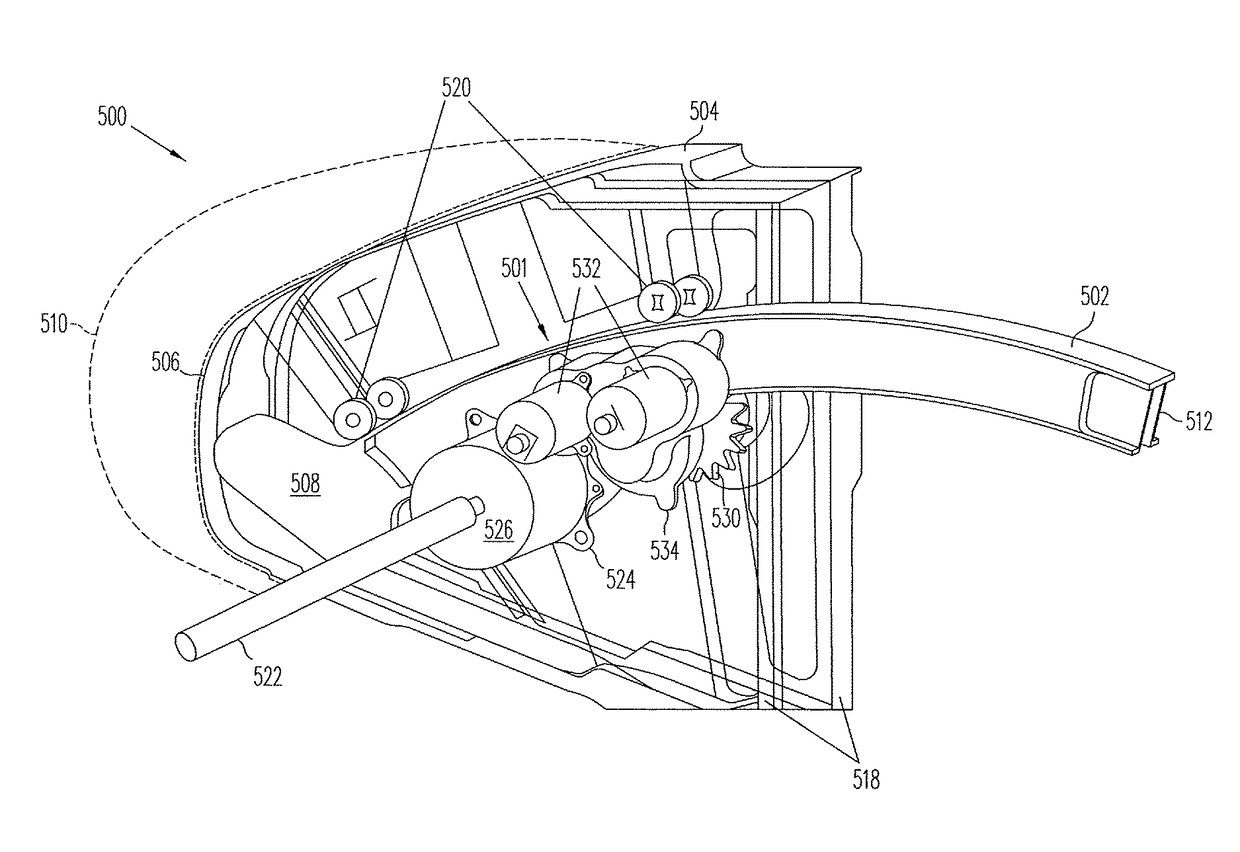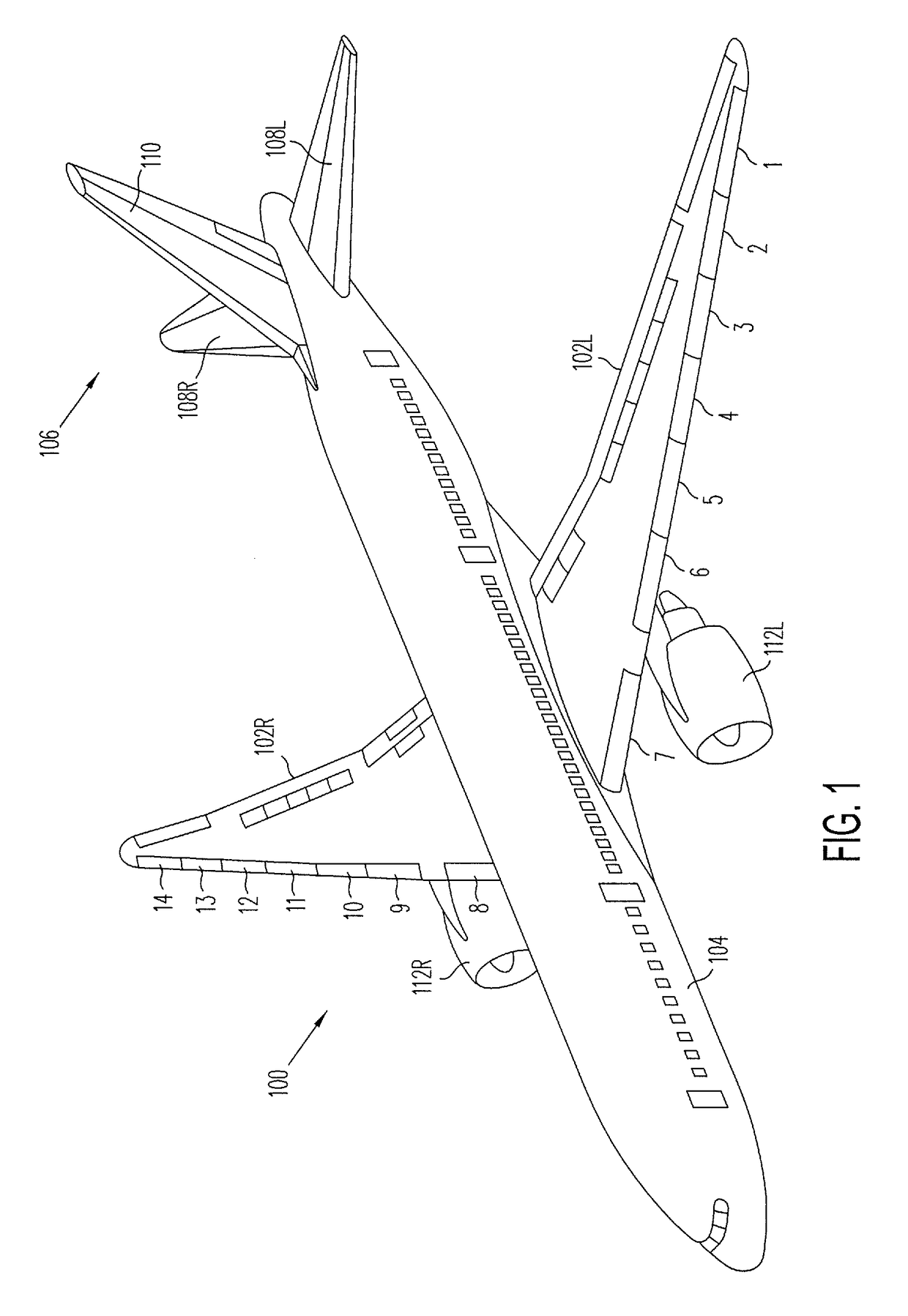Aircraft wing slat skew detection systems and methods
a technology of wing slats and detection systems, applied in mechanical devices, transportation and packaging, gearing, etc., can solve the problems of other slats, relatively small deflection, and end of slat displacement, and achieve the effect of adding significant weight or cost to the aircra
- Summary
- Abstract
- Description
- Claims
- Application Information
AI Technical Summary
Benefits of technology
Problems solved by technology
Method used
Image
Examples
Embodiment Construction
[0021]In accordance with the present disclosure, example systems and methods are provided for detecting a leading edge wing slat skew condition in an aircraft reliably and without adding significant weight or cost to the aircraft.
[0022]FIG. 1 is an upper, left side perspective view of a modern commercial jet aircraft 100 equipped with a plurality of slats 1-14, which are disposed along the leading edges of its wings 102L and 102R in pairs, e.g., 1 / 14, 2 / 13, 3 / 12, and so on, that are bilaterally symmetrical with respect to a centerline of the aircraft 100. The aircraft 100 also conventionally includes an elongated fuselage 104 and an empennage 106, comprising a pair of horizontal stabilizers and associated elevators 108L and 108R, and a vertical stabilizer and associated rudder 110.
[0023]Like many passenger jet aircraft today, such as the Boeing 757, 767, 777 and 787 models, the example aircraft 100 of FIG. 1 includes a pair of bilaterally symmetrical, wing-mounted turbofan engines 1...
PUM
 Login to View More
Login to View More Abstract
Description
Claims
Application Information
 Login to View More
Login to View More - R&D
- Intellectual Property
- Life Sciences
- Materials
- Tech Scout
- Unparalleled Data Quality
- Higher Quality Content
- 60% Fewer Hallucinations
Browse by: Latest US Patents, China's latest patents, Technical Efficacy Thesaurus, Application Domain, Technology Topic, Popular Technical Reports.
© 2025 PatSnap. All rights reserved.Legal|Privacy policy|Modern Slavery Act Transparency Statement|Sitemap|About US| Contact US: help@patsnap.com



